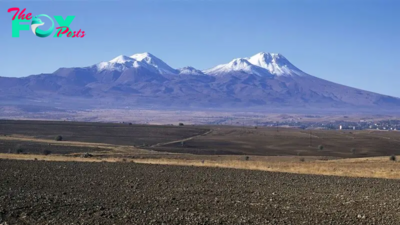Science
Enormous deposit of rare earth elements discovered in heart of ancient Norwegian volcano
The heart of an ancient volcano in Norway hosts Europe's largest deposit of rare earth elements, according to the mining company Rare Earths Norway.
On June 6, the company released a report on the deposit, which found that there is an estimated 8.8 megatons of rare earth oxides available in the outcrop. About 1.5 megatons of that is expected to be rare earth magnets, which are used in wind turbines and electric vehicles.
"[T]he resource estimate underscores the potential of the deposit to be a truly transformative asset that can underpin a secure rare earths value chain for Europe," Rare Earths Norway CEO Alf Reistad said in a statement.
The deposit, known as the Fen Carbonatite Complex, sits southwest of Oslo near Lake Norsjø. Some 580 million years ago, the complex was the pipe of an active volcano. Now long dead, the upper part of the volcano has eroded away, exposing this magma-filled pipe, which is about 1.2 miles (2 kilometers) in diameter, to the surface.
The magma solidified into carbonatite, which is rock chock-full of minerals that bear certain forms of carbonate molecules. According to Rare Earths Norway, this once-molten magma now holds economically important rare earth elements such as neodymium — a metallic element used to make magnets — and praseodymium, also used in magnets as well as in other applications like aircraft engines.

The mining company estimate focuses on the upper portion of the ancient volcano's guts, down to 1,535 feet (468 meters) below sea level. According to the company statement, there are likely deposits down to about 3,300 feet (1,000 m) below sea level.
The company plans to continue exploratory drilling and will also build a pilot plant near the outcrop for processing the ore into pure rare earth elements. According to a 2023 report from The Oxford Institute for Energy Studies, about 70% of the world's supply of rare earth elements are mined in China, and 90% of all rare earth elements are processed there.
-

 Science4d ago
Science4d agoSpaceX Launches Its Mega Starship Rocket. This Time, Mechanical Arms Catch It at Landing
-

 Science2w ago
Science2w agoYou Won’t Want to Miss October’s Rare Comet Sighting. Here’s How and When You Can See It
-

 Science4w ago
Science4w agoA New Spacecraft Could Help Determine if There’s Life on a Moon of Jupiter
-

 Science1m ago
Science1m agoWe Can Thank Deep-Space Asteroids for Helping Start Life on Earth
-

 Science1m ago
Science1m agoStranded Astronauts Set to Come Home After SpaceX Capsule With Extra Seats Reaches ISS
-

 Science1m ago
Science1m ago'Every volcano has its own personality': Mystery Mount Adams earthquake surge under investigation
-

 Science1m ago
Science1m agoEarth's crust may be building mountains by dripping into the mantle
-

 Science1m ago
Science1m agoHow strong can hurricanes get?



























